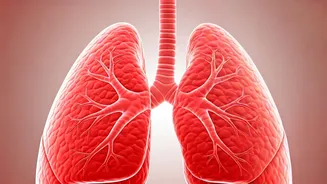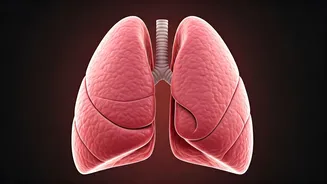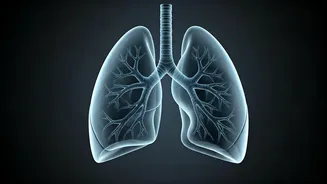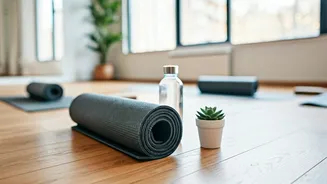Yoga's Quick Impact
Incorporating yoga into your daily routine, even for just a brief 10 minutes, can yield surprising benefits for lung function and overall well-being. This
concise practice is designed to be accessible to everyone, regardless of fitness level. The focused exercises and breathing techniques are intended to directly target and strengthen the lungs, particularly beneficial during times when air quality might be compromised, like the Diwali season. This rapid routine aims to counteract the potential respiratory effects of pollution and other environmental factors, promoting better breathing and increased energy levels within a short timeframe. With consistent practice, you'll discover how just a few minutes of mindful movement can significantly enhance your respiratory health.
Chest-Opening Poses Explained
Certain yoga poses are especially effective for improving airflow by opening the chest cavity. These poses work by stretching the muscles around the chest and ribs, creating more space for the lungs to expand fully. For instance, poses such as the 'Cobra Pose' (Bhujangasana) and 'Bridge Pose' (Setu Bandhasana) gently expand the chest, encouraging deeper breaths. Another effective pose involves a simple backbend, which further stretches the chest area, encouraging enhanced oxygen intake. These chest-opening poses are not just physical; they also help to release tension that may be restricting your breathing, enabling a deeper, more relaxed breath. Practicing these poses regularly will give you the confidence to breathe easier.
Power of Pranayama
Pranayama, or yogic breathing exercises, forms a fundamental part of the 10-minute yoga routine and is crucial for lung health. Different techniques within Pranayama focus on specific aspects of breathing, such as lengthening the inhale, exhale, or holding the breath. Practices like 'Ujjayi breath,' or the 'ocean breath,' involve constricting the back of the throat to create a gentle sound, encouraging a slow, controlled breath. 'Alternate nostril breathing' (Nadi Shodhana) balances the nervous system and improves oxygen intake by alternating breathing through each nostril. These breathing techniques help to improve oxygenation, reduce stress, and improve lung capacity. Through regular practice, the yogic breathing techniques support the overall effectiveness of the 10-minute yoga routine, leading to increased respiratory health.
Beyond Physical Exercise
The 10-minute yoga routine offers benefits that extend beyond mere physical exercise. It also introduces a practice of mindfulness and relaxation, which is particularly beneficial during stressful times. The deep breathing exercises in particular help to calm the mind and body. The practice encourages a sense of inner peace by reducing stress and improving focus, which in turn leads to a greater sense of overall well-being. This mindful approach can have a significant positive impact on your emotional and mental health. This simple daily practice can not only improve physical health but also helps to create a balanced, centered approach to life, making it a great addition to your routine during the Diwali season and beyond.












